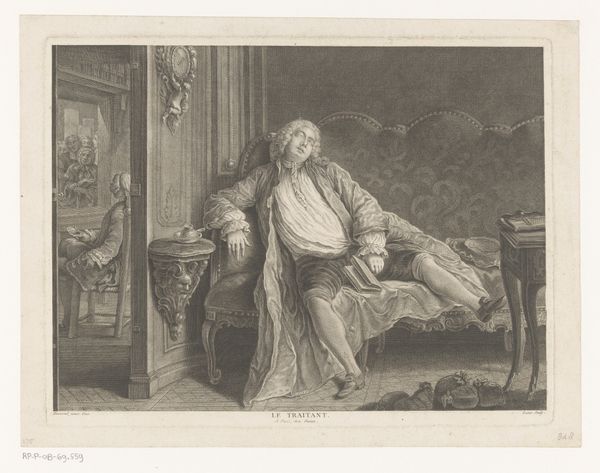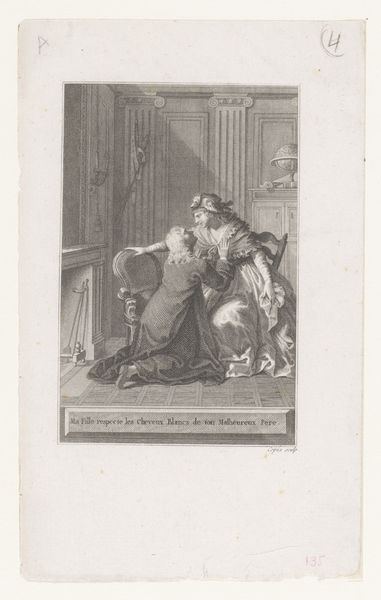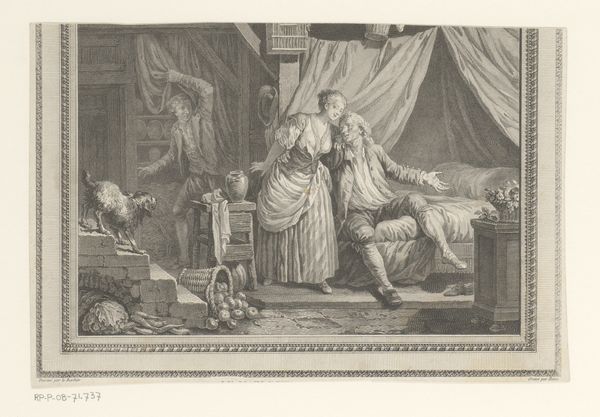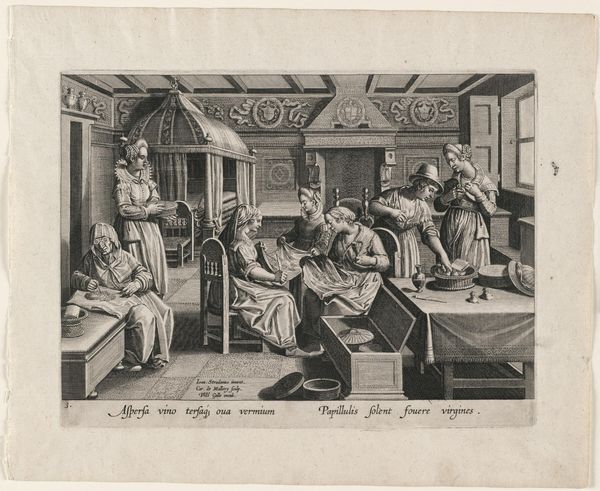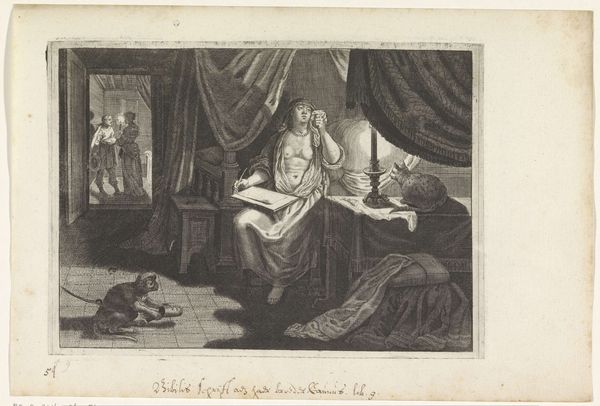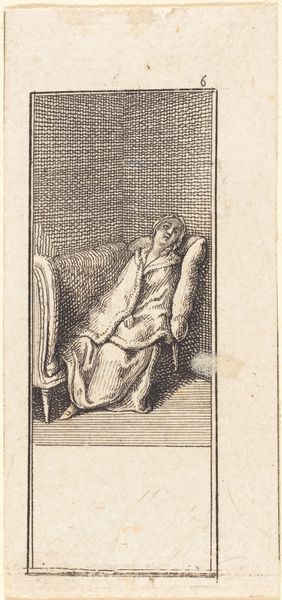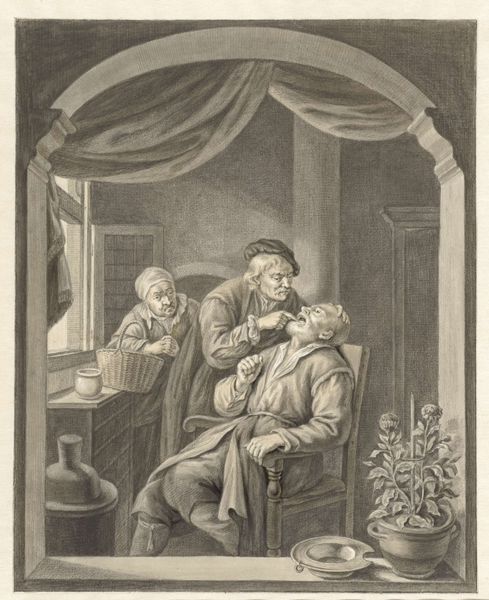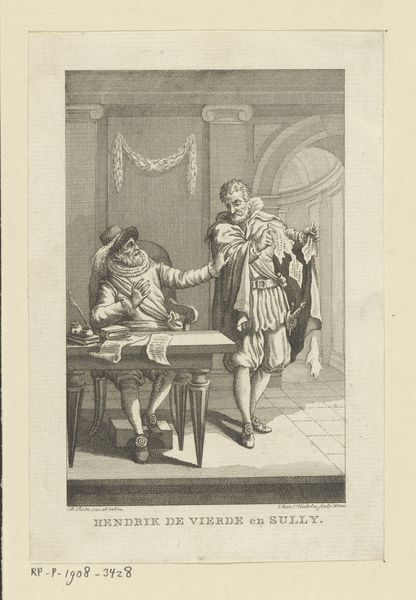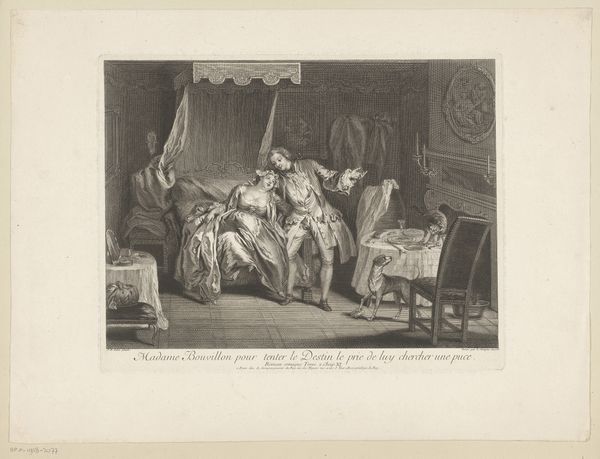
drawing, print, engraving
#
portrait
#
drawing
# print
#
old engraving style
#
genre-painting
#
history-painting
#
engraving
Dimensions: height 84 mm, width 137 mm
Copyright: Rijks Museum: Open Domain
Curator: This is Benoit Louis Prevost's engraving, "Man Behind a Writing Table", made in 1763. It seems a fellow has succumbed to slumber amidst his studies. What springs to mind for you when you see this, Editor? Editor: Exhaustion! The universal artist's lament perhaps? Or maybe an exhausted politician – I find my attention drawn to the context: the materials used for the print, where it might have been consumed. Is it meant as social critique? Curator: Maybe, though, on first impression, it feels more sympathetic. His books, his globe... these aren't props. It's an environment crafted to hold thought, and it has overwhelmed him. What intrigues you about its materiality? Editor: The lines, of course. Consider the engraver's labour. Every mark deliberately placed on that copper plate; an arduous task multiplied across potentially hundreds of prints. Who commissioned this? Was this printed for popular consumption, or a more elite circle? What paper was used? It tells a story of access. Curator: Interesting! I immediately looked into his private moment as portrayed in this picture... and that room, bathed in a muted indoor and outdoor light, has to do something with class and privilege, don't you agree? Editor: Absolutely, and let’s remember this is a reproduced image. The distribution makes the labor question really important here. How was this image seen, shared, or consumed in a context far from its original creation, potentially recontextualizing the subject itself? Curator: Good question! Maybe this image of him can be also about how much it is required of certain people at this certain time in history, about all this work and all those social functions of aristocracy... all a source of exhaustion, just as real as any other labor that goes into the making of those drawings! Editor: A compelling thought – collapsing high-minded contemplation into mere "labor" certainly punctures some aristocratic ideals. Ultimately, for me, the process reveals so much about this historical moment's values and systems, extending beyond simply aesthetics or narrative. Curator: For me, I will retain the melancholy of its lines, light, shadows that talk of dedication and commitment, and quietude. A nice invitation for self reflection... Editor: A lovely closing thought, Curator, on an etching as evocative as this one.
Comments
No comments
Be the first to comment and join the conversation on the ultimate creative platform.
